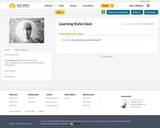
Learning Styles Quiz
- Subject:
- Education
- Material Type:
- Assessment
- Date Added:
- 09/19/2018

Learning Styles Quiz
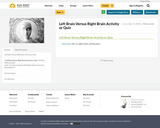
Left Brain Versus Right Brain Activity or Quiz

This article is by Douglas Fisher & Nancy Frey. It looks at the Jigsaw strategy for teaching and discusses how to use it properly. It includes videos of the strategy in action as well!
This article could help tighten up your Jigsaw strategy or approach it in a new and innovative way!
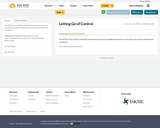
This ACSD article by Nancy Steineke examines how classroom management hinges on community, not coercing students into compliance.
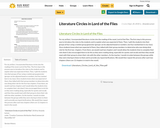
For my artifact, I incorporated literature circles into the reading of the novel, Lord
of the Flies. The first step in this process was to introduce the roles to the students and
to explain what was expected of them. Then, I split the students into their groups of four
using a random group generator (groups can be adjusted based on numbers, but four
worked best in my class). Once students knew what was expected of them, they talked
with their group members to determine who was doing what role for the first two
chapters. From there, we would read two chapters and I would allow the students time
to complete their role sheet (I also encouraged them to do this as they were reading
along, especially for quotes and vocab) and then they would meet with their group to
share their role with the other members. As the teacher, I would circulate between the
groups while they were sharing to listen to them and to provide any input/clarifications.
We would then repeat this process after each two chapters (there are 12 chapters in
total in the novel).

Plan and deliver effective Reading Comprehension mini-lessons with this downloadable PDF that outlines the lesson in a 4-step lesson architecture:
- Step l: INTRODUCTION: You (re)introduce the skill.
- Step 2: INSTRUCTION: You explain and demonstrate the skill.
- Step 3: INTERACTION: They experience the skill.
- Step 4: CLOSURE: You crystallize the skill.
Use the template to create effective reading comprehension mini-lessons in your classroom today!
The link offers information about how to purchase "The Comprehension Playbook" for various grade levels.

Thinking of students on different pathways to learning can help us better understand Personalized Learning.
Implementing learning pathways can help teachers to "adapt to each student’s learning progress, motivation and goals".
In the example given (and there are many more versions you could use!) Students are on 3 pathways. All pathways get small group instruction!
Pathway 1 - these are the students that are usually ahead. They skip over some things and get into the deeper work.
Pathway 2 - the "core" track for students working at level.
Pathway 3 - these students may have gaps or work more slowly. They don't get MORE work, but work at their level. They will likely get more small group instruction than the other paths.
Formative assessment is used on all pathways to improve instruction and learning.
*students can move between pathways if desired or necessary!
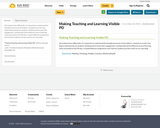
All students learn differently. It is important to understand the thought processes of all students. I wanted to use the class blog to demonstrate my students’ thinking and increase their engagement. I worked with all the different areas of learning styles presented at this PD day. I created different assignments and I had the students put their work on our class blog
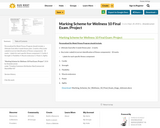
Personalized Six Week Fitness Program should include:
o Ultimate Goal after 6 week fitness plan- 2 marks
o Key (color coded) & (correct identification of fitness components) - 10 marks
- Labels for each specific fitness component
1. Cardio
2. Strength
3. Flexibility
4. Muscle endurance
5. Power
6. Agility
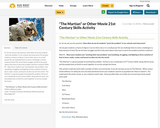
So, let me ask you the question: How often do we let students “work the problem” in our schools and classrooms?
Do we give students a chance to figure it out on their own or in a small group? Do we challenge them to solve a challenge in a fixed amount of time? Do we let them struggle and fail to the point where they have to work the problem and find a solution?
With PL - Now every student was “working their own problem” and stumbling, struggling, and fighting to find a solution of how to learn, make, create, and launch an idea out into the world.
“The Martian” is a great example of working the problem. He has to use a multitude of 21st Century Skills, along with his team, and the people back on Earth to work together to survive and get him home.

Review math concepts but transfering responsibility and having your students review old math concepts.
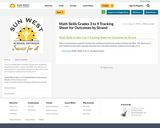
This is a tracking sheet created by Timothy Hom and Brenna Siroski from Loreburn school in Sun West. This allows you or your students to track which outcomes have been met in all of the strands for numeracy from Grades 1 to 9.

Mathopoly - Turning Math into a Game
This presentation from iLearn teaches you how to turn math into the game Monopoly using paid resources from Teachers Pay Teachers.
For the low cost of about $4 you can have Mathopoly spicing up your math classes and giving students the opportunity to personalize their learning!
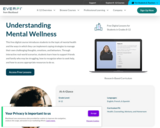
Mental Wellness – Basics is a course that introduces adolescents to concepts related to mental health and wellness. Stigma associated with mental health can have serious and negative impacts on help-seeking behaviors, and many mental health conditions and symptoms can be significantly lessened through prevention. As such, this course will do the following:
Support students in identifying threats to mental health early, and taking measures to increase factors that protect mental health.
Attempt to reduce stigma by introducing students to the experiences of others in order to develop awareness and empathy, as well as by providing facts on the prevalence and symptoms of mental health conditions.
Foster a mental health mindset in students and help them develop feelings of self-efficacy by introducing knowledge and skills that promote and model advocacy for self and others.
This Course Covers
Self Awareness
Self Management
Relationship Skills
Social Awareness
Responsible Decision-Making

This 15 minute video explores how to leverage mini lessons to have great impact on learning for your students. Templates are provided for planning mini lessons as well. Mini lessons truly change (and set you and your students up to win) the game.
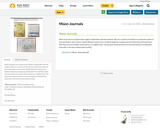
Moon Journals are a project that I begin in September with the students. We use a variety of
activities in conjunction with our journals (poetry, short stories, Apollo Mission research, etc).
Students begin by creating a journal which they will take home with them and record their
observations on a nightly basis. The purpose of the journals is to increase/improve writing skills,
especially in the area of descriptive writing.
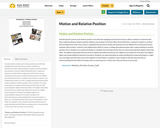
Introducing the motion and relative position unit with this engaging and
interactive lesson allows students to demonstrate their understanding of
relative position. Being a new teacher to the Sun West School Division, I
wanted to submit an artifact that included most of the 21st century
competencies focused on within the division thus far. Within this
introduction lesson, students will use their creativity and collaboration skills
to create a collage that demonstrates their understanding of relative
position. Since students are using technology to complete the learning
activity, they are also practicing their digital citizenship skills. The digital
citizenship elements that are addressed within this lesson are: digital access
(element of respect) and digital rights and responsibilities (element of
protect). Students are demonstrating an understanding that using
technology is a right, not a privilege and that they must work together on
the IPads to complete a task. Students will also demonstrate an
understanding that the IPads are being used as a learning tool, so they must
only use them as instructed.

Visit this link to download the article.
This publication re-envisions professional practice, learning and development for educators in competency-based education.
As school districts transition to new, more powerful student-centered learning models, it’s critical that educators leading the transformative practice are equipped for their new roles. Moving Toward Mastery describes a teaching profession that is equity-oriented, learning-centered and lifelong; it recommends 15 strategies that can help school districts successfully make this paradigm shift.
Building off examples of effective teaching, professional development and practice across the nation, the new report explores how communities can work together to prompt and sustain complex systems change of moving both students and teachers from a one-size-fits-all approach to education to one in which all students and all teachers can succeed.
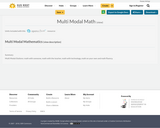
Multi Modal Stations: math with someone, math with the teacher, math with technology, math on your own and math fluency.
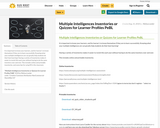
It is important to know your learners, and for learner's to know themselves if they are to learn successfully. Knowing what your multiple intelligences are can greatly help students do their best learning!
Having a variety of inventories makes it easier to revisit this each year without having to do the same inventory over and over.
This includes online and printable inventories, and some tips for using MI in the classroom.